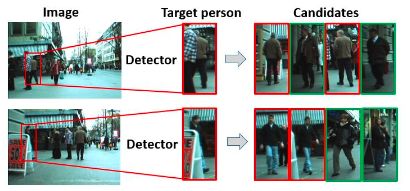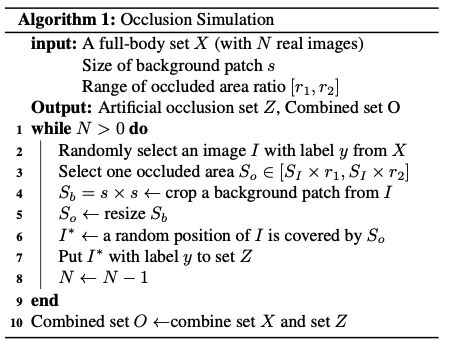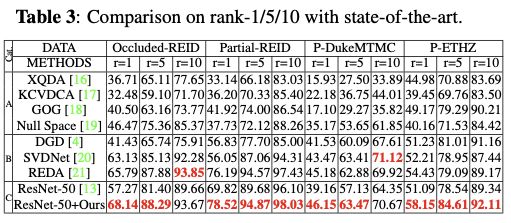- Briefcase 项目常见问题解决方案
刘梓苹
Briefcase项目常见问题解决方案briefcaseToolstosupportconvertingaPythonprojectintoastandalonenativeapplication.项目地址:https://gitcode.com/gh_mirrors/br/briefcase1.项目基础介绍和主要编程语言Briefcase是一个由BeeWare项目开发的工具,旨在帮助开发者将Py
- LeetCode-196. 删除重复的电子邮箱
做一个AC梦
LeetCode-数据库leetcode数据库sqlmysql
题目描述表:Person+-------------+---------+|ColumnName|Type|+-------------+---------+|id|int||email|varchar|+-------------+---------+id是该表的主键列(具有唯一值的列)。该表的每一行包含一封电子邮件。电子邮件将不包含大写字母。编写解决方案删除所有重复的电子邮件,只保留一个具有最
- docker安装单机nacos、rocketmq、reids、xxl-job、minio、elasticsearch、kibana、gogs、nginx、mongo
丶会武术的流氓丶
dockerrocketmqrediselasticsearch
目录在右侧中部启动容器报错直接删除那个name后边的就可以安装nacos首先需要拉取对应的镜像文件:dockerpullnacos/nacos-server挂载目录:mkdir-p/mydata/nacos/logs/#新建logs目录mkdir-p/mydata/nacos/init.d/vim/mydata/nacos/init.d/custom.properties#修改配置文件修改cust
- List中的对象进行排序处理
以下是使用JavaStream对对象列表按id和age排序的完整示例,包含升序和降序两种场景:1.定义测试对象类@Getter@SetterpublicclassPerson{privateintid;privateintage;}2.排序实现代码importjava.util.*;importjava.util.stream.Collectors;publicclassStreamSortExa
- 索引失效的7中情况
qq_35460875
数据库sqljava
1.列与列对比索引失效情况某两列都建立了单独索引,下面情况不会走索引select*fromtestwhereid=c_id2.列存在NULL值索引失效情况我们在涉及数据库表的时候,应该尽量避免NULL值出现如果避免不了,最好也要给一个default默认值默认值可以为0,-1字符串默认值可以用“空字符串”3.NOT条件索引失效情况where条件中以下情况都会导致索引失效500;select*from
- select高级——子查询
聪聪的学习笔记
数据可数据库sqlmysql
定义子查询是在一个查询的内部包括另一个查询的查询方式。简单子查询案例select*from`comment`wherecmtDate>(selectcmtDatefrom`comment`wherecmtAuthor='东东1')IN和NOTIN子查询IN案例查询名字中包含’东‘的作者评论过的所有新闻SELECT*FROMnewsWHEREidIN(SELECTnewsIdFROM`comment
- 【DBA手记】-MySQL小版本升级文档-从5.7.30升级到5.7.42
DBA.superSong
MySQLdbamysql
【DBA手记】-MySQL小版本升级文档-从5.7.30升级到5.7.42本文档先在测试环境下验证,后在准生产环境也作了验证.为了更安全,建议先用mydumper或mysqldump或xtraback等常用备份工具做好备份工作.备注:本文是整理的之前一个笔记author:superSongEmail:
[email protected]背景及环境因扫描出mysql有安全漏洞,解决方案那就为升
- 绕过SQL注入监测的技术
绕过SQL注入监测的技术SQL注入监测通常通过WAF(Web应用防火墙)、IDS/IPS或应用层检测机制实现:1.编码混淆技术十六进制编码:SELECT*FROMusersWHEREid=0x31OR1=1URL编码:id=1%20OR%201%3D1Unicode编码:id=1+OR+1=1→id=1+%u004F%u0052+%u0031%u003D%u00312.注释混淆内联注释(MySQL
- Python 的内置函数 property
Python内建函数列表>Python的内置函数propertyPython的内置函数property()是一个非常重要的工具,用于管理类属性的访问。它提供了一种优雅的方式来定义属性访问器(getter)、设置器(setter)和删除器(deleter)方法,同时保持简洁的接口。基本用法classPerson:def__init__(self,name):self._name=name@prope
- Vue 图片加载失败显示默认图片
数字浪儿
vuevue.js前端javascript
方法一:通过onerror属性加载默认图片exportdefault{data(){return{img:'',//访问图片的ip地址defaultImg:`this.src='${require('@/assets/images/right/default-person.png')}'`,};},}方法二:通过@error方法加载默认图片exportdefault{data(){return{i
- JavaScript对象(Object)常用操作
创建对象//使用对象字面量、构造函数或者Object.create()方法来创建对象//对象字面量constperson={name:'John',age:30,hobbies:['reading','swimming']};//构造函数functionCar(make,model){this.make=make;this.model=model;}constmyCar=newCar('Toyot
- C#学习日志
future1412
c#学习java
构造函数和析构函数知识点一构造函数基本概念在实例化对象时会调用的用于初始化的函数如果不写默认存在一个无参构造函数构造函数的写法1.没有返回值2.函数名和类名必须相同3.没有特殊需求时一般都是public的classPerson{publicstringname;publicintage;类中是允许自己申明无参构造函数的结构体是不允许publicPerson(){name="怪盗基德";age=18
- Kotlin面向对象编程实战
Devil枫
安卓kotlin开发语言android
一、类与对象:从蓝图到实例Kotlin的类定义简洁高效,支持属性自动生成getter/setter。以下是一个完整的Person类示例://定义Person类classPerson(valname:String,varage:Int){//成员方法funintroduce(){println("姓名:$name,年龄:$age")}//私有方法示例privatefunvalidateAge(){r
- 【一文搞清楚指针结构体还有单链表】
DevangLic
数据结构c++学习链表C
可直接使用测试,开车稳稳的数据结构基础指针结构体链表//结构体与指针-油门踩到底,一口气讲他个水落石出#include#include#includestruct{charname[50];intage;}boy,girl;structPerson{charname[50];intage;floatheight;};typedefstructStudent{charname[50];intage;
- 【无标题】获取独立按键值
五幺大师
51单片机
#include#include"Delay.h"/***@brief获取独立按键键码*@param无*@retval按下按键的键码,范围:0~4,无按键按下时返回值为0*/unsignedcharKey(){unsignedcharKeyNumber=0;if(P3_1==0){Delay(20);while(P3_1==0);Delay(20);KeyNumber=1;}if(P3_0==0)
- Vue 列表渲染&数据更新
爱菜鸟高高飞
vue每日一更前端vue.jselementuijavascript
一.基本使用基本列表人员列表(遍历数组){{p.name}}-{{p.age}}汽车信息(遍历对象){{k}}-{{value}}测试遍历字符串(用得少){{char}}-{{index}}测试遍历指定次数(用得少){{index}}-{{number}}Vue.config.productionTip=falsenewVue({el:'#root',data:{persons:[{id:'001
- 数据库-事务
ruleslol
springspringjdbc
一、什么是事务?在执行SQL语句的时候,某些业务要求,一系列操作必须全部执行,而不能仅执行一部分。例如,一个转账操作:--从id=1的账户给id=2的账户转账100元--第一步:将id=1的A账户余额减去100UPDATEaccountsSETbalance=balance-100WHEREid=1;--第二步:将id=2的B账户余额加上100UPDATEaccountsSETbalance=ba
- sqlserver 中的go的作用
NaiQai
SqlServer
如果只是执行一条语句,有没有go都一样,如果多条语句之间用go分隔开就不一样了,每个被go分隔的语句都是一个单独的事务,一个语句执行失败不会影响其他语句执行。例如:首先同时执行下边的语句select*fromsysobjectswhereid=aselectgetdate()你会发现会报错,并且不会显示任何结果集而你再执行select*fromsysobjectswhereid=agoselect
- STM32F407 步进电机梯形加减速
smallerlang
STM32电机stm32单片机arm
/*USERCODEBEGINHeader*//*********************************************************************************@file:main.c*@brief:Mainprogrambody************************************************************
- Python中类基础知识详解和应用
点云SLAM
Pythonpython开发语言深度学习人工智能计算机视觉python中的类学习
Python类知识详解类的定义语法class类名:#类体(属性、方法)示例:classPerson:pass创建类的实例(对象)p=Person()#创建一个类的对象(实例)类的构造方法(__init__)__init__是类的构造函数,在实例化对象时自动调用,用于初始化属性。classPerson:def__init__(self,name,age):self.name=nameself.age
- JSON简介及其应用
Jackson@ML
MongoDBJavaScriptNode.jsjsonJavaScriptNode.js
JSON简介及其应用
[email protected]的概念JSON(JavaScriptObjectNotation)是一种轻量级的数据交换格式,采用键值对(key-value)的方式组织数据,语法类似JavaScript对象,易于人阅读和机器解析。2.JSON的作用JSON有几方面的作用如下:•在前后端数据交互中传
- git配置(1): 根据remote自动选择账号执行commit
ArthurBreeze
git
git配置(1):根据remote自动选择账号执行commit在公司电脑上,克隆了github的仓库,也克隆了内网gitlab的仓库。希望commit和push到内网gitlab时,使用公司账号;commit和push到github时,使用个人账号。原本以为~/.gitconfig只能配置单个账户:[user]name=my_personal_nameemail=my_personal_email
- 黑马JVM解析笔记(六):深入理解JVM类加载机制与运行时优化
null不是我干的
JVMjvm笔记
1.JVM类加载类加载是Java虚拟机将描述类.class文件加载到内存,并对数据进行校验、转换解析和初始化,最终形成可以被JVM直接使用的Java类型的过程。核心阶段:加载—>连接—>初始化1.1加载,以jdk1.8为例类加载器先把Person.class字节码解析为InstanceKlass(底层是c++)结构,存放一些关键信息和对象的引用,生命周期与类加载器相同(类卸载时才释放)然后就是把新
- 在C#中 属性(Properties)get 和 set
周杰伦fans
ai学习参考学习C#的笔记c#服务器
在C#中,属性(Properties)是一种特殊的方法,用于封装类、结构或接口中的字段。属性允许你控制对字段的访问,并可以在设置或获取值时执行额外的逻辑。属性通常由两个访问器组成:get和set。基本属性定义publicclassPerson{privatestringname;publicstringName{get{returnname;}set{name=value;}}}在这个例子中,Na
- Objective-C面向对象编程:类、对象、方法详解(保姆级教程)
帅次
iOSObj-Cobjective-ciosiphonesafariswiftmacosflutter
目录一、核心概念二、类的定义(分.h和.m文件)1.头文件(.h)——公开声明2.实现文件(.m)——具体实现3.属性特性解析原子性所有权语义(ARC环境下)读写控制三、对象创建与内存管理1.创建对象的两种方式2.关键步骤解析3.instancetype四、方法调用(消息传递机制)1.基本语法2.关键概念五、self与super关键字六、动手实践:完整工作流1.创建Person对象并调用方法2.项
- swift 对象转Json
泓博
swift
在Swift中将对象转换为JSON可以通过以下方法实现:使用Codable协议Swift的Codable协议(Encodable和Decodable的组合)是处理JSON编码和解码的推荐方式。structPerson:Codable{varname:Stringvarage:Int}letperson=Person(name:"John",age:30)letencoder=JSONEncoder
- Vue-12-前端框架Vue之应用基础生命周期和自定义hooks
皮皮冰燃
Vuevue.js前端框架前端
文章目录1生命周期的理解2vue2的生命周期2.1创建工程2.2App.vue(根组件)2.3Person.vue(子组件)2.4生命周期钩子示例2.4.1Person.vue2.4.2App.vue3vue3的生命周期3.1创建工程3.2App.vue(根组件)3.3Person.vue3.4挂载流程4hooks(钩子)4.1准备效果(Person.vue)4.2hooks4.2.1useDog
- 7-26 查询某人
黄油烤菠萝
java算法数据结构
有一个人员数组,要在此数组中查询某个人是否存在,具体要求如下:1.定义Person类:a属性name和ageb两个属性的getters和settersc带参数构造方法,为name和age给值以及无参构造方法,给name赋值为none,age赋值为1dToString方法publicStringtoString(){return"Person[name="+name+",age="+age+"]";
- Python curl_cffi教程
思念停滞不前
pythonjava爬虫scrapy
支持python3.8及以上版本,能解决ja3,akamai等指纹问题。安装curl_cffipipinstallcurl_cffi样例fromcurl_cffiimportrequests #模拟Chrome浏览器发送请求response=requests.get("https://tools.scrapfly.io/api/fp/ja3",impersonate="chrome")print(
- Java面向对象编程详解
java
以下是Java面向对象编程的核心概念与技术要点详解,结合最新实践规范整理:一、类与对象基本定义类(Class):对象的抽象模板(如Person类定义人的共性属性和行为)对象(Object):类的具体实例(如newPerson("张三",25))关系:类是蓝图,对象是实体对象创建与使用javaCopyCode//定义类publicclassStudent{//属性(成员变量)Stri
- 分享100个最新免费的高匿HTTP代理IP
mcj8089
代理IP代理服务器匿名代理免费代理IP最新代理IP
推荐两个代理IP网站:
1. 全网代理IP:http://proxy.goubanjia.com/
2. 敲代码免费IP:http://ip.qiaodm.com/
120.198.243.130:80,中国/广东省
58.251.78.71:8088,中国/广东省
183.207.228.22:83,中国/
- mysql高级特性之数据分区
annan211
java数据结构mongodb分区mysql
mysql高级特性
1 以存储引擎的角度分析,分区表和物理表没有区别。是按照一定的规则将数据分别存储的逻辑设计。器底层是由多个物理字表组成。
2 分区的原理
分区表由多个相关的底层表实现,这些底层表也是由句柄对象表示,所以我们可以直接访问各个分区。存储引擎管理分区的各个底层
表和管理普通表一样(所有底层表都必须使用相同的存储引擎),分区表的索引只是
- JS采用正则表达式简单获取URL地址栏参数
chiangfai
js地址栏参数获取
GetUrlParam:function GetUrlParam(param){
var reg = new RegExp("(^|&)"+ param +"=([^&]*)(&|$)");
var r = window.location.search.substr(1).match(reg);
if(r!=null
- 怎样将数据表拷贝到powerdesigner (本地数据库表)
Array_06
powerDesigner
==================================================
1、打开PowerDesigner12,在菜单中按照如下方式进行操作
file->Reverse Engineer->DataBase
点击后,弹出 New Physical Data Model 的对话框
2、在General选项卡中
Model name:模板名字,自
- logbackのhelloworld
飞翔的马甲
日志logback
一、概述
1.日志是啥?
当我是个逗比的时候我是这么理解的:log.debug()代替了system.out.print();
当我项目工作时,以为是一堆得.log文件。
这两天项目发布新版本,比较轻松,决定好好地研究下日志以及logback。
传送门1:日志的作用与方法:
http://www.infoq.com/cn/articles/why-and-how-log
上面的作
- 新浪微博爬虫模拟登陆
随意而生
新浪微博
转载自:http://hi.baidu.com/erliang20088/item/251db4b040b8ce58ba0e1235
近来由于毕设需要,重新修改了新浪微博爬虫废了不少劲,希望下边的总结能够帮助后来的同学们。
现行版的模拟登陆与以前相比,最大的改动在于cookie获取时候的模拟url的请求
- synchronized
香水浓
javathread
Java语言的关键字,可用来给对象和方法或者代码块加锁,当它锁定一个方法或者一个代码块的时候,同一时刻最多只有一个线程执行这段代码。当两个并发线程访问同一个对象object中的这个加锁同步代码块时,一个时间内只能有一个线程得到执行。另一个线程必须等待当前线程执行完这个代码块以后才能执行该代码块。然而,当一个线程访问object的一个加锁代码块时,另一个线程仍然
- maven 简单实用教程
AdyZhang
maven
1. Maven介绍 1.1. 简介 java编写的用于构建系统的自动化工具。目前版本是2.0.9,注意maven2和maven1有很大区别,阅读第三方文档时需要区分版本。 1.2. Maven资源 见官方网站;The 5 minute test,官方简易入门文档;Getting Started Tutorial,官方入门文档;Build Coo
- Android 通过 intent传值获得null
aijuans
android
我在通过intent 获得传递兑现过的时候报错,空指针,我是getMap方法进行传值,代码如下 1 2 3 4 5 6 7 8 9
public
void
getMap(View view){
Intent i =
- apache 做代理 报如下错误:The proxy server received an invalid response from an upstream
baalwolf
response
网站配置是apache+tomcat,tomcat没有报错,apache报错是:
The proxy server received an invalid response from an upstream server. The proxy server could not handle the request GET /. Reason: Error reading fr
- Tomcat6 内存和线程配置
BigBird2012
tomcat6
1、修改启动时内存参数、并指定JVM时区 (在windows server 2008 下时间少了8个小时)
在Tomcat上运行j2ee项目代码时,经常会出现内存溢出的情况,解决办法是在系统参数中增加系统参数:
window下, 在catalina.bat最前面
set JAVA_OPTS=-XX:PermSize=64M -XX:MaxPermSize=128m -Xms5
- Karam与TDD
bijian1013
KaramTDD
一.TDD
测试驱动开发(Test-Driven Development,TDD)是一种敏捷(AGILE)开发方法论,它把开发流程倒转了过来,在进行代码实现之前,首先保证编写测试用例,从而用测试来驱动开发(而不是把测试作为一项验证工具来使用)。
TDD的原则很简单:
a.只有当某个
- [Zookeeper学习笔记之七]Zookeeper源代码分析之Zookeeper.States
bit1129
zookeeper
public enum States {
CONNECTING, //Zookeeper服务器不可用,客户端处于尝试链接状态
ASSOCIATING, //???
CONNECTED, //链接建立,可以与Zookeeper服务器正常通信
CONNECTEDREADONLY, //处于只读状态的链接状态,只读模式可以在
- 【Scala十四】Scala核心八:闭包
bit1129
scala
Free variable A free variable of an expression is a variable that’s used inside the expression but not defined inside the expression. For instance, in the function literal expression (x: Int) => (x
- android发送json并解析返回json
ronin47
android
package com.http.test;
import org.apache.http.HttpResponse;
import org.apache.http.HttpStatus;
import org.apache.http.client.HttpClient;
import org.apache.http.client.methods.HttpGet;
import
- 一份IT实习生的总结
brotherlamp
PHPphp资料php教程php培训php视频
今天突然发现在不知不觉中自己已经实习了 3 个月了,现在可能不算是真正意义上的实习吧,因为现在自己才大三,在这边撸代码的同时还要考虑到学校的功课跟期末考试。让我震惊的是,我完全想不到在这 3 个月里我到底学到了什么,这是一件多么悲催的事情啊。同时我对我应该 get 到什么新技能也很迷茫。所以今晚还是总结下把,让自己在接下来的实习生活有更加明确的方向。最后感谢工作室给我们几个人这个机会让我们提前出来
- 据说是2012年10月人人网校招的一道笔试题-给出一个重物重量为X,另外提供的小砝码重量分别为1,3,9。。。3^N。 将重物放到天平左侧,问在两边如何添加砝码
bylijinnan
java
public class ScalesBalance {
/**
* 题目:
* 给出一个重物重量为X,另外提供的小砝码重量分别为1,3,9。。。3^N。 (假设N无限大,但一种重量的砝码只有一个)
* 将重物放到天平左侧,问在两边如何添加砝码使两边平衡
*
* 分析:
* 三进制
* 我们约定括号表示里面的数是三进制,例如 47=(1202
- dom4j最常用最简单的方法
chiangfai
dom4j
要使用dom4j读写XML文档,需要先下载dom4j包,dom4j官方网站在 http://www.dom4j.org/目前最新dom4j包下载地址:http://nchc.dl.sourceforge.net/sourceforge/dom4j/dom4j-1.6.1.zip
解开后有两个包,仅操作XML文档的话把dom4j-1.6.1.jar加入工程就可以了,如果需要使用XPath的话还需要
- 简单HBase笔记
chenchao051
hbase
一、Client-side write buffer 客户端缓存请求 描述:可以缓存客户端的请求,以此来减少RPC的次数,但是缓存只是被存在一个ArrayList中,所以多线程访问时不安全的。 可以使用getWriteBuffer()方法来取得客户端缓存中的数据。 默认关闭。 二、Scan的Caching 描述: next( )方法请求一行就要使用一次RPC,即使
- mysqldump导出时出现when doing LOCK TABLES
daizj
mysqlmysqdump导数据
执行 mysqldump -uxxx -pxxx -hxxx -Pxxxx database tablename > tablename.sql
导出表时,会报
mysqldump: Got error: 1044: Access denied for user 'xxx'@'xxx' to database 'xxx' when doing LOCK TABLES
解决
- CSS渲染原理
dcj3sjt126com
Web
从事Web前端开发的人都与CSS打交道很多,有的人也许不知道css是怎么去工作的,写出来的css浏览器是怎么样去解析的呢?当这个成为我们提高css水平的一个瓶颈时,是否应该多了解一下呢?
一、浏览器的发展与CSS
- 《阿甘正传》台词
dcj3sjt126com
Part Ⅰ:
《阿甘正传》Forrest Gump经典中英文对白
Forrest: Hello! My names Forrest. Forrest Gump. You wanna Chocolate? I could eat about a million and a half othese. My momma always said life was like a box ochocol
- Java处理JSON
dyy_gusi
json
Json在数据传输中很好用,原因是JSON 比 XML 更小、更快,更易解析。
在Java程序中,如何使用处理JSON,现在有很多工具可以处理,比较流行常用的是google的gson和alibaba的fastjson,具体使用如下:
1、读取json然后处理
class ReadJSON
{
public static void main(String[] args)
- win7下nginx和php的配置
geeksun
nginx
1. 安装包准备
nginx : 从nginx.org下载nginx-1.8.0.zip
php: 从php.net下载php-5.6.10-Win32-VC11-x64.zip, php是免安装文件。
RunHiddenConsole: 用于隐藏命令行窗口
2. 配置
# java用8080端口做应用服务器,nginx反向代理到这个端口即可
p
- 基于2.8版本redis配置文件中文解释
hongtoushizi
redis
转载自: http://wangwei007.blog.51cto.com/68019/1548167
在Redis中直接启动redis-server服务时, 采用的是默认的配置文件。采用redis-server xxx.conf 这样的方式可以按照指定的配置文件来运行Redis服务。下面是Redis2.8.9的配置文
- 第五章 常用Lua开发库3-模板渲染
jinnianshilongnian
nginxlua
动态web网页开发是Web开发中一个常见的场景,比如像京东商品详情页,其页面逻辑是非常复杂的,需要使用模板技术来实现。而Lua中也有许多模板引擎,如目前我在使用的lua-resty-template,可以渲染很复杂的页面,借助LuaJIT其性能也是可以接受的。
如果学习过JavaEE中的servlet和JSP的话,应该知道JSP模板最终会被翻译成Servlet来执行;而lua-r
- JZSearch大数据搜索引擎
颠覆者
JavaScript
系统简介:
大数据的特点有四个层面:第一,数据体量巨大。从TB级别,跃升到PB级别;第二,数据类型繁多。网络日志、视频、图片、地理位置信息等等。第三,价值密度低。以视频为例,连续不间断监控过程中,可能有用的数据仅仅有一两秒。第四,处理速度快。最后这一点也是和传统的数据挖掘技术有着本质的不同。业界将其归纳为4个“V”——Volume,Variety,Value,Velocity。大数据搜索引
- 10招让你成为杰出的Java程序员
pda158
java编程框架
如果你是一个热衷于技术的
Java 程序员, 那么下面的 10 个要点可以让你在众多 Java 开发人员中脱颖而出。
1. 拥有扎实的基础和深刻理解 OO 原则 对于 Java 程序员,深刻理解 Object Oriented Programming(面向对象编程)这一概念是必须的。没有 OOPS 的坚实基础,就领会不了像 Java 这些面向对象编程语言
- tomcat之oracle连接池配置
小网客
oracle
tomcat版本7.0
配置oracle连接池方式:
修改tomcat的server.xml配置文件:
<GlobalNamingResources>
<Resource name="utermdatasource" auth="Container"
type="javax.sql.DataSou
- Oracle 分页算法汇总
vipbooks
oraclesql算法.net
这是我找到的一些关于Oracle分页的算法,大家那里还有没有其他好的算法没?我们大家一起分享一下!
-- Oracle 分页算法一
select * from (
select page.*,rownum rn from (select * from help) page
-- 20 = (currentPag






